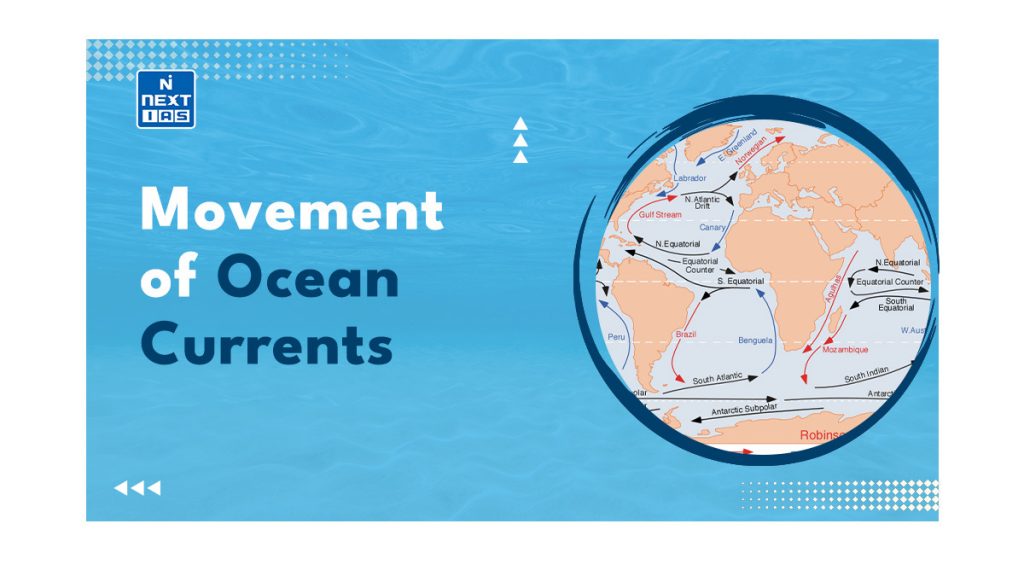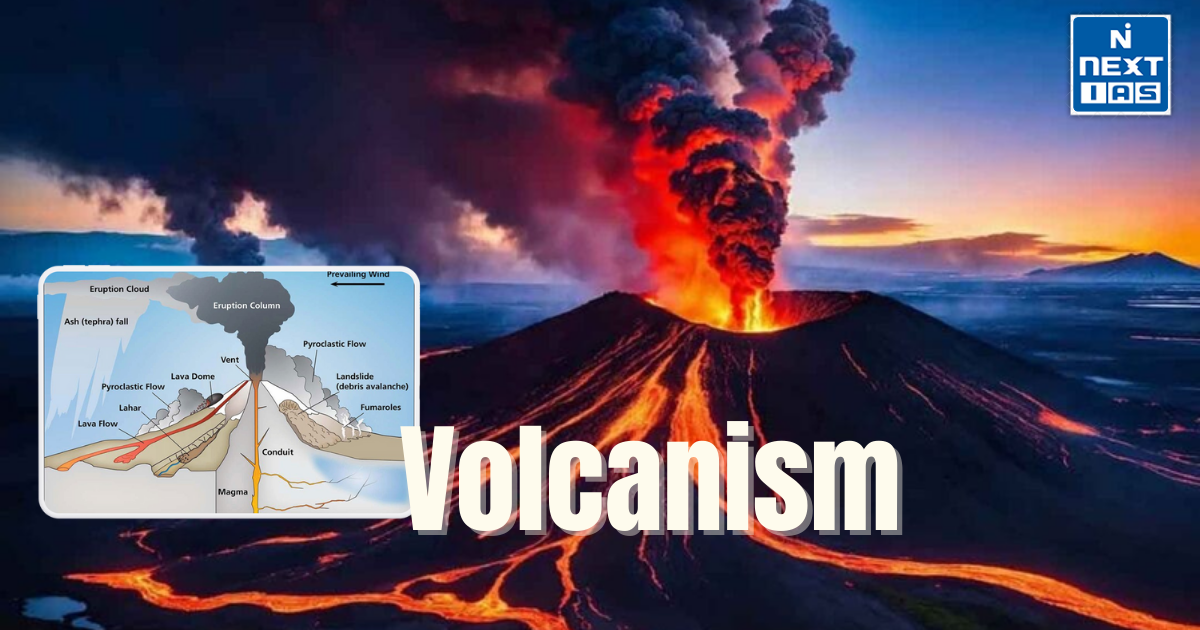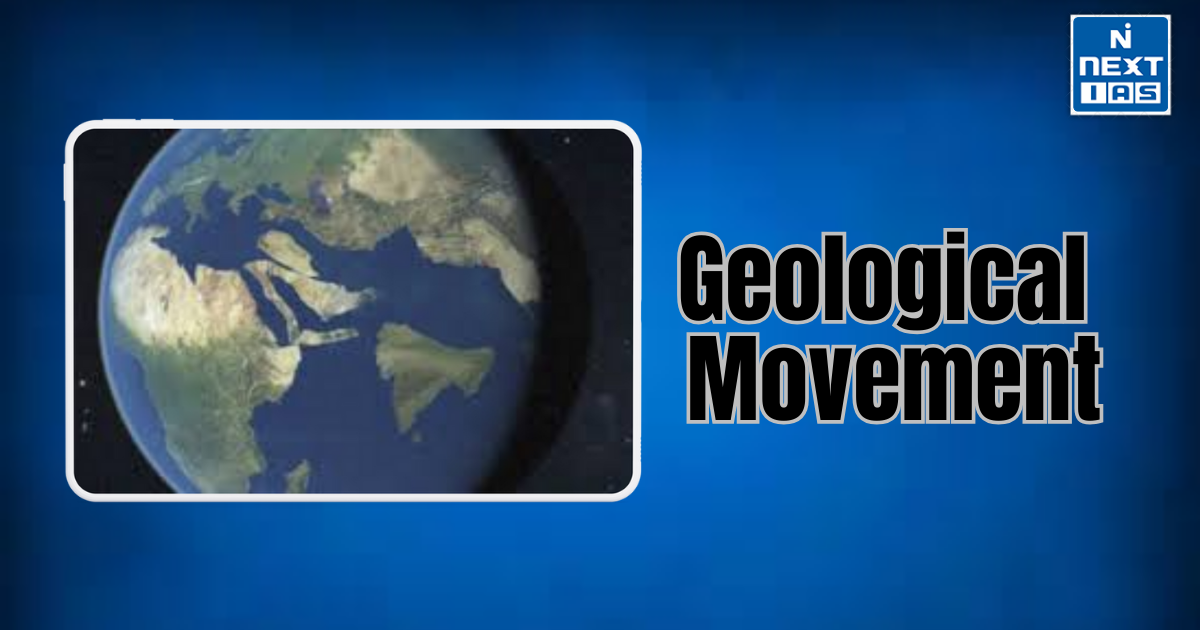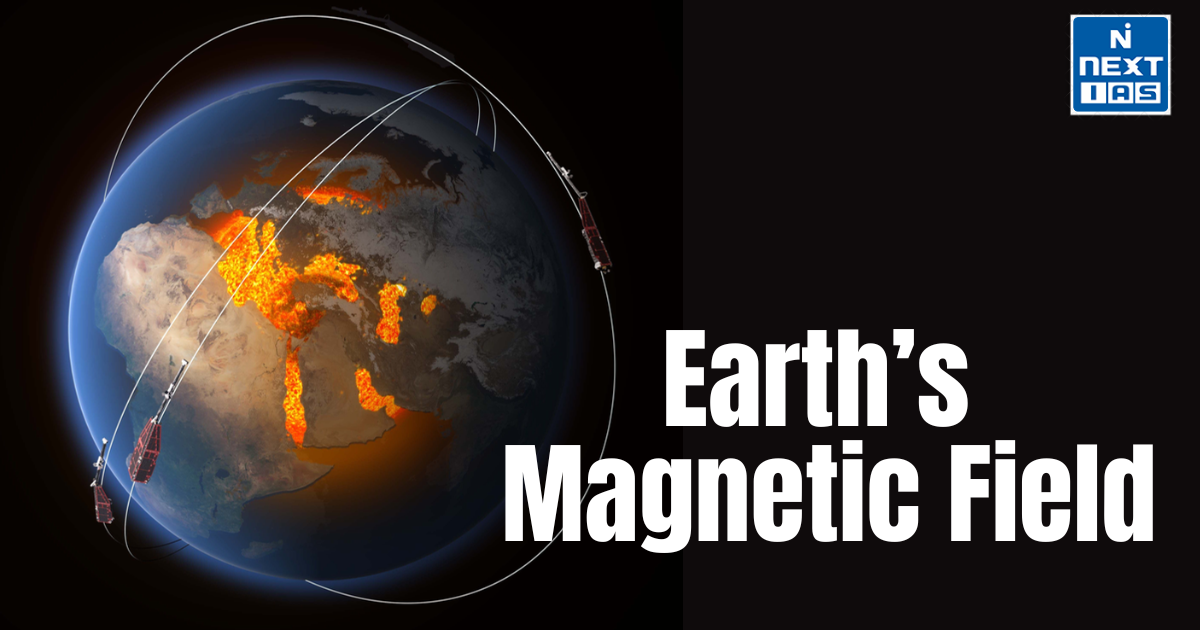
The steady, directional flow of seawater caused by wind, gravity, the Coriolis effect, and water density is known as an ocean current. The water in the ocean is ever-changing. The movement of ocean water is influenced by a number of variables, including temperature, salinity, density, and external forces like the sun, moon, and winds. This article aims to provide a comprehensive overview of the movement of ocean currents and its types, factors and prominent terms.
Ocean Currents
- Ocean currents are streams of water that flow within a larger body of water, whether on the surface or below it. These currents can be described as the general movement of a specific volume of ocean water, following a defined path and direction.
- Similar to rivers flowing within land, ocean currents facilitate the exchange of cold deep waters with warmer surface waters. As a result, they play a vital role in redistributing heat from lower latitudes to higher latitudes, carrying nutrients from the depths of the ocean to the surface, and influencing the climate of coastal regions.
- When the surface water of the oceans moves forward due to prevailing winds, it is referred to as drift.
- On the other hand, ocean currents involve the movement of oceanic water in a specific direction with greater speed. Ocean streams, such as the Gulf Stream, involve the movement of a larger mass of ocean water in a definite direction with higher velocity compared to drift and other currents.
- Descending order of velocity: Streams > Currents > Drifts.
Read our detailed article on Ocean Currents.
Factors Affecting the Movement of Ocean Currents
A current is usually strongest at the surface and decreases in speed with depth. The forces which influence the ocean currents are as follows:-
Planetary Winds
- The movement of water on the surface of the ocean is influenced by the wind blowing over it. The friction between the wind and the water’s surface impacts the direction and speed of the water’s movement.
- It is important to understand that the wind affects the momentum of the water, but it does not initiate the movement.
- A notable example of the impact of prevailing winds on ocean currents can be observed in the North Indian Ocean.
- In this region, the direction of the current completely changes when the monsoon winds reverse.
Temperature
- The movement of ocean water, both on the surface and below it, is initiated by temperature differences. The temperature of the ocean water at the equator differs significantly from that at the poles.
- The solar energy heats the water, causing it to expand. As a result, there is an 8 cm gradient between the elevated equatorial water and the middle latitude. This gradient causes the water to flow downhill.
- Due to its lower density, the warm water moves from areas of lower density to areas of higher density. On the other hand, the denser cold water sinks.
- The warm equatorial water slowly moves towards the poles along the surface, while the colder polar water slowly creeps along the bottom towards the equator.
Salinity
Water with high salinity is denser than water with low salinity. Thus, denser saline water sinks below, while the relatively lighter water tends to rise.
Coriolis Force
- The Coriolis Effect influences the movement of oceanic currents by providing them with direction.
- This effect occurs due to the Earth’s surface rotating faster at the equator compared to the poles. It affects the paths of various moving objects, such as currents, winds, and airplanes, that are only loosely connected to the ground.
- Specifically, in the northern hemisphere, the Coriolis force causes the water to move to the right, while in the southern hemisphere, it causes the water to move to the left.
Coastal Configuration
The coastal alignment and presence of underwater ridges play a role in determining the direction of ocean currents. The shape of the land also influences the flow of these currents. For example, the equatorial current is divided into two branches after encountering the Brazilian coast.
Types of Ocean Currents
| On the Basis of Depth | – Surface currents make up approximately 10% of the total volume of water in the ocean, specifically referring to the upper 400 meters. – On the other hand, deep water currents account for the remaining 90%. – These currents circulate throughout the ocean basin as a result of density and gravity fluctuations. |
| On the Basis of Temperature | Cold Current: – Ocean currents play a significant role in distributing cold water to warmer areas. They move from the polar regions towards the equator. – Typically, these currents are observed along the west coast of continents in the low and middle latitudes, regardless of the hemisphere. – In the northern hemisphere, however, they are more commonly found along the east coast in higher latitudes. Warm Current: – Warm water is moved to colder areas by ocean currents. These currents move from the equatorial regions towards the poles. – These particular currents are located on the eastern coasts of continents in the low and middle latitudes, which is true for both hemispheres. – In the northern hemisphere, these currents can also be found along the western coasts of continents in higher latitudes. |
Some Other Prominent Terms
Gyre
A Gyre is a term used to describe a vast system of rotating ocean currents, particularly those influenced by large wind movements. These currents are generated by the Coriolis force.
Drift
- When ocean water is propelled forward by prevailing winds, it is referred to as Drift. The term “drift” is also used to measure the speed of an ocean current, which is typically measured in knots.
- Example – The North Atlantic Drift.
Streams
- On the other hand, when a substantial body of ocean water moves along a defined path, resembling a large river on land, it is known as a Stream.
- Streams tend to have a higher velocity compared to drifts.
- Example – The Gulf Stream.
Eddies
Ocean eddies are swirling, rotating masses of water that can occur within ocean currents. They can have a notable impact on local oceanic and atmospheric conditions.
The motion of ocean water plays a crucial role in Earth’s climate system and has wide-ranging effects on weather patterns, marine ecosystems, and global climate regulation. Ongoing research by scientists aims to gain a deeper understanding of these processes and their influence on our planet.
GS - 1





